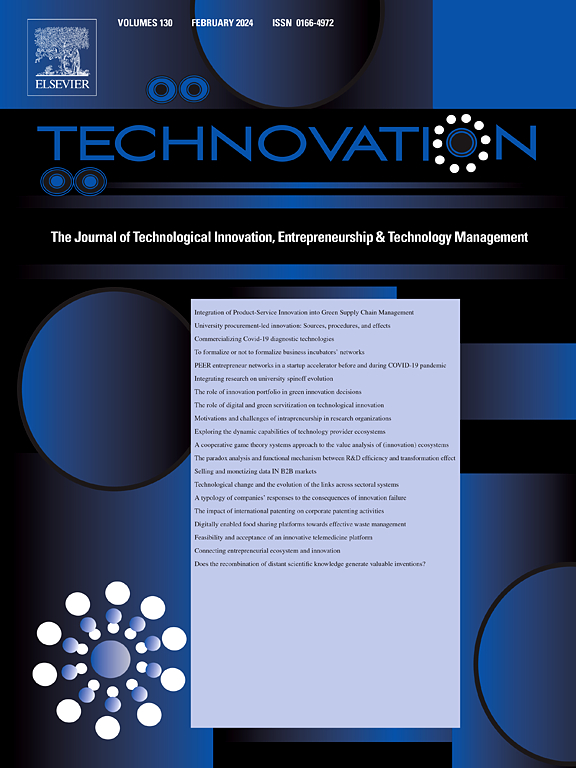预测技术与时空联系预测模型的融合
IF 10.9
1区 管理学
Q1 ENGINEERING, INDUSTRIAL
引用次数: 0
摘要
技术融合是指两种或两种以上现有技术合并形成混合技术,从而改变组织的竞争优势,重构竞争规则和市场网络的创新过程。因此,研究人员和管理人员都在积极地理解和预测技术融合的趋势,以有效地适应和拥抱环境的不确定性。然而,现有的技术融合研究主要集中在空间上的单维预测,相对较短的时间跨度为1-2年。此外,这些模型在解决技术融合网络中数据不平衡的问题方面往往存在不足。为此,我们提出了一种基于深度学习的时空链接预测模型——时序特征连接图门控网络(STFCGG)。我们的链接预测模型实现了同步的时空预测,提供了3-4年的中长期预测,并从算法的角度解决了数据不平衡的挑战。虚拟现实(VR)和增强现实(AR)领域的专利数据的实验结果表明,我们的模型在处理数据不平衡问题方面具有优越性和鲁棒性,从而为未来的技术融合方向提供了有价值的见解。除了方法上的贡献外,我们的新连结预测模型也为行政人员提供了开发技术管理策略的宝贵工具。本文章由计算机程序翻译,如有差异,请以英文原文为准。
Forecasting technology convergence with the spatiotemporal link prediction model
Technology convergence represents an innovative process wherein two or more existing technologies amalgamate to form hybrid ones, thereby altering the competitive advantage of organizations and restructuring the competition rules and market networks. Consequently, both researchers and managers are actively engaged in comprehending and forecasting the trend of technology convergence to effectively adapt to and embrace environmental uncertainties. However, existing research on technology convergence primarily focuses on spatially single-dimensional predictions with a relatively short-term horizon of 1–2 years. Additionally, these models often fall short in addressing the issue of imbalanced data within technology convergence networks. In response, we propose the Spatiotemporal Feature Concatenation with Graph Gated Network (STFCGG), a deep learning-based spatiotemporal link prediction model. Our link prediction model achieves simultaneous spatiotemporal predictions, provides medium-to long-term forecasts spanning 3–4 years, and addresses the challenge of imbalanced data from an algorithmic perspective. Experimental results with patent data from the Virtual Reality (VR) and Augment Reality (AR) fields have demonstrated our model's superiority and robustness in handling data imbalance issues, thereby offering valuable insights for future technology convergence directions. In addition to the methodology contribution, our novel link prediction model also provides executives with a valuable tool to develop technological management strategies.
求助全文
通过发布文献求助,成功后即可免费获取论文全文。
去求助
来源期刊

Technovation
管理科学-工程:工业
CiteScore
15.10
自引率
11.20%
发文量
208
审稿时长
91 days
期刊介绍:
The interdisciplinary journal Technovation covers various aspects of technological innovation, exploring processes, products, and social impacts. It examines innovation in both process and product realms, including social innovations like regulatory frameworks and non-economic benefits. Topics range from emerging trends and capital for development to managing technology-intensive ventures and innovation in organizations of different sizes. It also discusses organizational structures, investment strategies for science and technology enterprises, and the roles of technological innovators. Additionally, it addresses technology transfer between developing countries and innovation across enterprise, political, and economic systems.
 求助内容:
求助内容: 应助结果提醒方式:
应助结果提醒方式:


